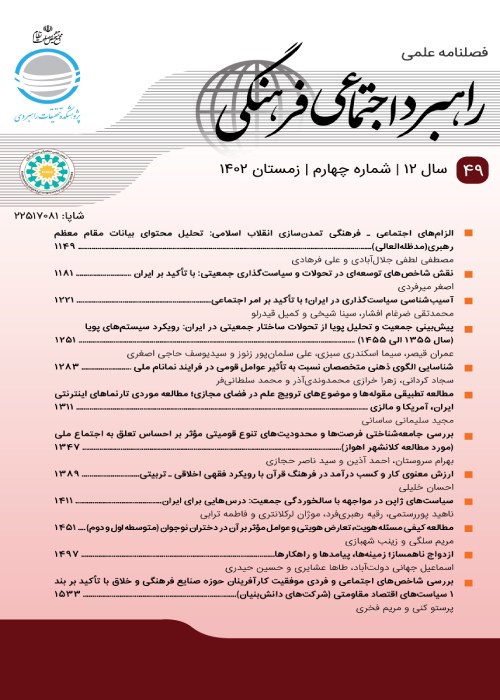Analysis of the semiotics of the evolution of socio-cultural meaning of the urban houses of Hamedan in the three periods of Qajar, Pahlavi and contemporary
Meaning is one of the most important topics in the fields of psychology, sociology, architecture, urban planning, and landscape design today so that in the field of architecture, the place of meanings and the transfer of concepts in size, Form, and performance have been important. The house has a special place in architectural structures. Architecturally speaking, houses belong to the world of concepts and meanings, and if the people who live in it can understand its governing concepts, they can better communicate with that environment. Each and every detail in traditional Iranian houses had its meaning and concept for users, which has made it valuable. Unfortunately, today, with the advent of modernity and the industrialization of societies, the house is seen as a means of temporary use, and this has caused the house to take on a new meaning. This study examines the meaning of home from the perspective of social sciences that pays more attention to the cultural and social aspects of the home. In this approach, one of its methods is the semiotic method. The purpose of this study is to investigate the effective components in creating meaning in a traditional urban house and to develop a conceptual model for proper reading of the text of the house by layered semiotics so that its layers are identified and the objective appearance of the signals network is determined in an interactive context.
-
Analysis and typology of first Pahlavi period houses in Sanandaj using a physical- culturalism approach
Mona Mohamadmoradi, Mehrdad Yousefzamani *, Mohamadebrahim Zarei,
Journal of Iranian Architecture and Urbanism, -
Perception of Pir Shaliar’s Pouse Prchitecture Based on Maurice Merleau-Ponty’s Phenomenological approach
Mohammad Dana Salem *, Sara Jalalian, , Salman Mardokhi
Bagh-e Nazar,



